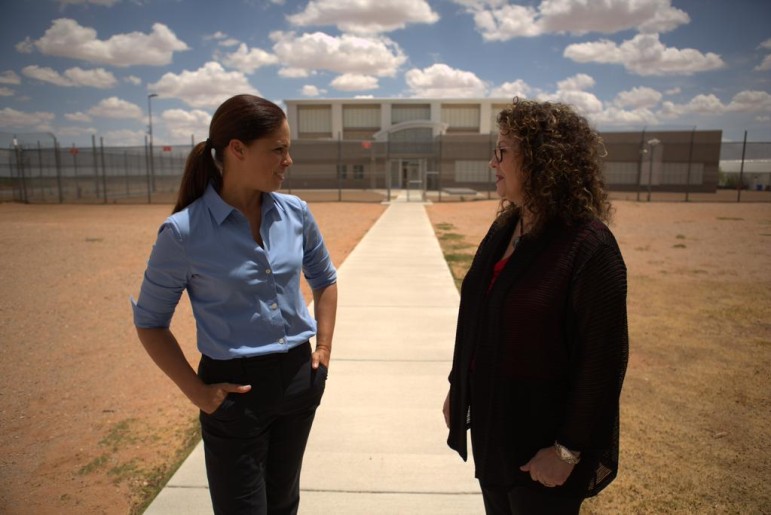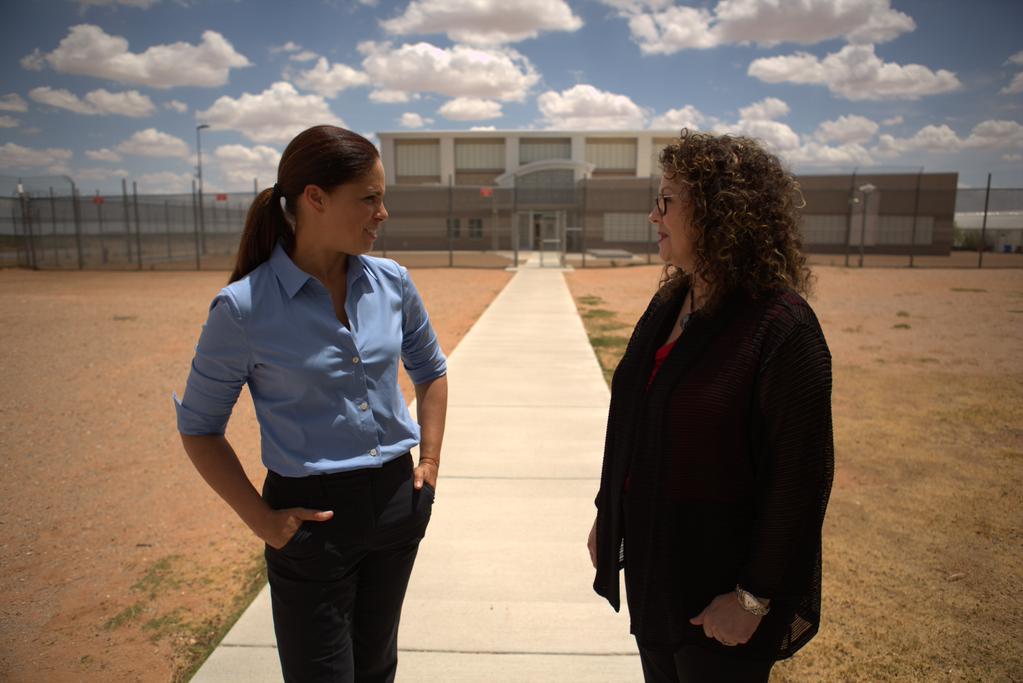
Al Jazeera America
The new documentary “Kids Behind Bars: A Soledad O’Brien Special Report” goes inside a once-notorious juvenile lock-up, the J. Paul Taylor Center in Las Cruces, New Mexico.
It’s Keith’s 17th birthday, and he’s celebrating with snack cakes — a bit of comfort food while he’s away from his family.
Keith is seven months into a two-year stretch in New Mexico’s juvenile justice system, committed for shoplifting and violating probation. It’s the fourth birthday he’s spent in some sort of state custody, and he says he’s ready to change his life. But he’s still struggling to rein in his recurring flare-ups of anger, even though he knows his next fight could lead to more time in lockup.
“If I go outside doing the same thing, I’m going to end up robbing the wrong person, getting myself killed,” he says during a group counseling session. Without a change, “I’ll either be dead within a week or in prison for the rest of my life.”
Keith is one of several teenagers, counselors and administrators at New Mexico’s J. Paul Taylor Center featured in an Al Jazeera America special on juvenile justice in the state. The hour-long documentary that premiered Sunday night shows how the state is trying to implement reforms that have proven successful in getting troubled kids in other states back on track.
The producers made numerous visits to the Taylor Center over several months, recording the teens’ personal stories “as opposed to it being nameless, faceless young men who were incarcerated,” Soledad O’Brien, the narrator and executive producer, told JJIE. “We really found the young men were really willing to sit down and spend a lot of time with us.”
New Mexico adopted what’s become known as the “Missouri model” after a series of court cases and settlements in the last decade. The model shifts the focus of juvenile corrections toward education and counseling for teens committed to state custody, and experts have credited it with sharply reducing recidivism and leaving kids better prepared for schools and jobs on the outside.
“There is an expense, and I think it’s a little too new to say whether that expense is worth it because it’s a little too soon to determine how the recidivism rates are going,” O’Brien said. But the Missouri model “has shown they’ve been able to drop recidivism rates by having a more humane, quote-unquote, approach to kids.”
In New Mexico’s version, dubbed “Cambiar” — Spanish for “change” — the teens at the Taylor Center get six and a half hours of education, daily group counseling sessions and one-on-one therapy sessions once a week. Up to 70 percent of the youth in New Mexico’s juvenile justice system suffer from some kind of mental disorder, the facility’s superintendent says.
“I think that the idea was how do you figure out how to deal with the kids, and how do you create an environment where there is a chance that they can be rehabilitated and deal with some of the core issues that they’re really grappling, with, which require some therapy, frankly,” O’Brien said.
The documentary contrasts that approach with the old model through the recollections of Eric Contreras, who first entered New Mexico’s juvenile system at age 8 and was locked up for manslaughter by age 11. Contreras describes near-constant fights among the teens, being beaten and hog-tied by guards and being put in solitary confinement — isolated 23 hours a day for months on end.
“I thought that was just how it was supposed to be, but now I look back, that was no way to live,” Contreras says.
Now, staffers at the Taylor Center are trained to see themselves as coaches and mentors rather than guards. When fights break out, they take the boys back to their rooms and talk through what happened rather than locking them away.
“I think some people will roll their eyes and say, ‘Oh, my God, this is so crunchy, this therapy constantly,’ ” O’Brien said. “But for the young men, as much as sometimes they’ll tell me how much they hate it, they actually enjoy the process of being able to give their side and explain from their perspective how they got mad, why they threw a punch. Many of them see it as much more fair.”
In addition to Keith, who’s in for shoplifting and violating probation, viewers meet the newbie Kedrick, who’s struggling to adjust to lockup; and the 19-year-old Vincente, who has developed interests in physics and music while in lock up for arson and assault. In one of the most affecting scenes, the producers contrast the grim surroundings — barbed wire, cameras and monitors — with the sound of Vincente playing a Bach suite on a digital piano the facility found to encourage him.
Vincente has finished a GED and is taking online college courses. He wants to attend college or perhaps join the military, but realizes his record is an obstacle: “Right now, I look back and think, ‘Damn, I really messed myself over,’” he says.
O’Brien said Vincente, who now is in the process of leaving the system via a halfway house, is “a really great example.” “He certainly has learned his lesson and has learned a lot and grown a lot,” she told JJIE. “But what happens when he gets out? … The $64,000 question is what are the opportunities they have on the outside that will really keep them from coming back in.”
The documentary, which originally aired on Sunday April 12th, will air again on Saturday April 18th at 10pm EST and intermittently on Al Jazeera America.
